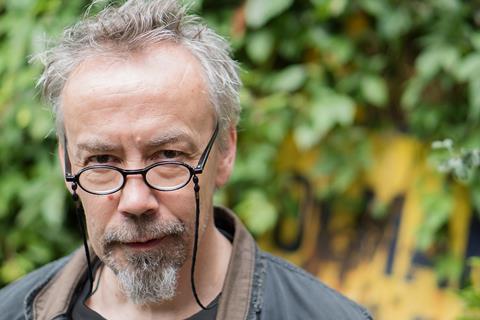Open spaces are different from buildings and require a humbler approach from designers, says David Rudlin

It’s the end of another academic year and I write this travelling back from two days as external examiner on the MA in urban design at Cardiff. Last week we had the first degree show of Atelier Lulu – a collaboration between my practice Urbed and Manchester School of Architecture. I’m always grateful for what I learn from students and this year one of my other students, Giles Nartey at the Bartlett, brought to my attention a quote from Bernard Tschumi that sums up one of the issues that you face teaching architects about urban design. Architecture, he wrote, “is not about the conditions of design, but about the design of conditions”.
One of the architectural notions that doesn’t transfer well to urban design is the idea of “programme”. It is fine when designing a building to ask “what is the programme for this space?” Buildings, after all, are designed to have a function and most of the spaces are intended for a particular activity. I might argue with the notion that it is the architect’s responsibility to programme the space – because it conjures up an image of a puppet master controlling the building’s occupants – but I’m prepared to let it pass.
By contrast the notion of programming public space is problematic.
Of course there are people whose job it is to programme concerts and events in public space. That’s not what I am talking about. My problem is with the notion that you can draw a plan and programme what will happen in each of the spaces you design. This is something that students do all the time – sometimes almost writing a script for their neighbourhoods. “You will live here, set up a business in this co-working space, drink your macchiato in this cafe, your children will skip home from school along this route, while you stop to admire the work of local artists and contribute to a participatory design exercise before relaxing over a pint in a craft brewery here run by nice young men with beards.”
And before all you architects out there get too smug, tell me you have never done the same. You might not have written the script quite so blatantly but all those CGIs and photomontages with children chasing hoops across lively public squares while multi-ethnic people mill around, shops and cafes throng with customers and somewhere in the background an outdoor cinema screen is showing something arty – are essentially doing the same thing. They are creating a fantasy about how a space will be used that bears no relationship to reality. Anything is possible in these idyllic narratives and I admit that even an old sceptic like myself is not immune to their seduction.
It would be great if we as designers did have the ability to programme all of this activity. The world would be a better place (perhaps) if we had this superpower. But of course we don’t. As Tschumi says, all we can do is create the conditions in which these things can take root. This is our job as urbanists and urban designers: not to programme public space but to create places conducive to the types of activity we hope promote.
>> Also read: ‘It’s not just a breathing space, it’s a social space’
>> Also read: Using art to breathe communities into life
Even with obvious activities like children’s play you need to get the conditions right if expensive play equipment is not to lie abandoned. Play space for young children will not be used unless it can be overlooked by parents, whereas a skate park will be shunned if it is overlooked. Markets, shops and cafes are incredibly location-sensitive and will only survive where there is sufficient footfall to sustain them, which in turn is dependent on issues like density, legibility and permeability. Community gardens and meeting areas, by contrast, have a different set of criteria for success and in any case it is the community who should decide where they go, not the designer.
Our job as urban designers is not to direct all of this activity or to pretend that it can be programmed. The illusion that we can do this is what leads to the spaces in our CGIs ending up windswept and deserted.
Our job is to create the conditions for positive things to take root and grow, while being sufficiently flexible and humble to accept that they will not always happen where and how we envisaged. We may yearn to be the playwrights of urban life but, in reality, we are just the stage designers for an endless play performed by a cast of thousands.
















1 Readers' comment